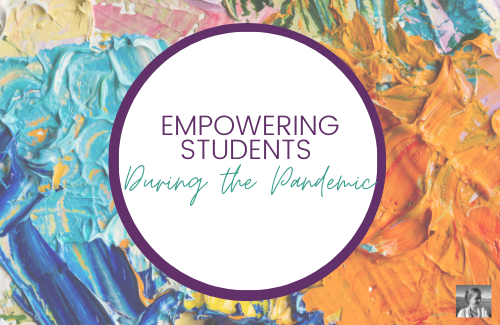Table of Contents
- Understanding Student-Centered Learning
- Tailored Learning Experiences
- Active Engagement
- Independence and Autonomy
- Collaboration and Peer Learning
- A Shift in the Role of the Teacher
- Empowering Students through Effective Teaching
- Building a Trusting Environment
- Encouraging Curiosity
- Providing Choice and Autonomy
- Feedback and Reflection
- Differentiated Instruction
Education is not merely the transmission of knowledge from teacher to student; it’s a dynamic process that empowers learners to take charge of their own intellectual growth. Student-centered learning is an approach that places students at the heart of their education, giving them the autonomy to explore, question and construct knowledge. In this article, we’ll delve into the concept of student-centered learning and how effective teaching empowers students to become active participants in their educational journey.
Education transcends the mere transfer of information; it’s a transformative journey where students evolve from passive recipients of knowledge into active architects of their own learning. At the core of this transformation lies the concept of student-centered learning, a dynamic approach that places students firmly in control of their educational destiny.
Student-centered learning is a pedagogical philosophy that revolutionizes the traditional classroom dynamic. Instead of the teacher being the sole source of knowledge, this approach empowers students to take ownership of their learning. It encourages them to ask questions, seek answers and construct knowledge through exploration and inquiry.
One of the central tenets of student-centered learning is autonomy. Students are not passive vessels waiting to be filled with facts; they are active participants in the learning process. They have the freedom to choose topics that resonate with their interests, delve into subjects that ignite their curiosity and set their own learning goals. This autonomy not only fosters a sense of agency but also nurtures a lifelong love for learning.
Critical thinking and problem-solving are fundamental skills honed in student-centered classrooms. Rather than simply memorizing facts, students are challenged to analyze information critically, synthesize ideas and apply their knowledge to real-world scenarios. They become adept at asking the ‘why’ and ‘how’ questions, cultivating a deeper understanding of the subject matter.
Collaboration also thrives in student-centered environments. Students engage in meaningful discussions, share insights and collaborate on projects, mirroring the collaborative nature of the modern workforce. They learn not only from their teachers but also from their peers, gaining diverse perspectives and developing crucial interpersonal skills.
Additionally, student-centered learning is adaptable to different learning styles. It recognizes that every student is unique, with distinct strengths and preferences. As such, it accommodates various approaches to learning, allowing students to choose the methods that work best for them. This individualized approach ensures that each student can reach their full potential.
Effective teaching in student-centered classrooms requires a shift in the role of the teacher. Educators become facilitators and guides, supporting students’ exploration and discovery. They create a safe and nurturing environment where students feel empowered to take risks and learn from mistakes. They provide timely feedback and encouragement, helping students refine their understanding and skills.
In conclusion, student-centered learning is a powerful paradigm shift that places students at the helm of their educational journey. It cultivates autonomy, critical thinking, collaboration and adaptability, all essential skills for success in the complex and rapidly evolving world. Effective teaching in this context empowers students not only to excel academically but also to become lifelong learners who actively engage with the world around them.
Looking for more insights? You’ll find them right here in our extended coverage: Empowering students: Pedagogy that benefits educators and learners
Understanding Student-Centered Learning
Student-centered learning is a pedagogical approach that shifts the focus from the teacher as the primary source of knowledge to the student as an active participant in their learning. Here’s how it works:
Student-centered learning is not just a pedagogical approach; it’s a philosophy that transforms the entire educational experience. Let’s delve deeper into how this transformative process unfolds:
1. Emphasis on Individual Needs
In student-centered learning, each student is recognized as a unique learner with distinct needs, interests and abilities. The approach acknowledges that a one-size-fits-all teaching method may not cater to the diverse learning styles present in a classroom. As a result, teachers engage in a process of ongoing assessment and observation to understand each student’s strengths and areas of improvement.
2. Learning Becomes Self-Directed
One of the fundamental shifts in student-centered learning is the promotion of self-directed learning. Students take an active role in setting goals, identifying resources and charting their learning path. They become responsible for managing their time and tasks, which fosters important life skills like time management and self-discipline.
3. Collaboration and Peer Learning
Student-centered classrooms often buzz with collaboration. Students work together on projects, engage in peer reviews and share their knowledge and insights. This collaborative environment not only mirrors the real-world nature of teamwork but also encourages the exchange of ideas and the development of social skills.
4. A Rich Tapestry of Assessment Methods
Traditional assessments, such as exams and quizzes, are just a part of the assessment landscape in student-centered learning. Teachers use a diverse range of assessment methods, including portfolios, presentations, debates and real-world problem-solving scenarios. These assessments provide a holistic view of a student’s abilities beyond mere memorization.
5. Fostering Intrinsic Motivation
Student-centered learning taps into intrinsic motivation—the desire to learn for the sake of learning itself. Instead of relying solely on external rewards or grades, students are motivated by a genuine curiosity and passion for the subject matter. They take ownership of their learning because it is personally meaningful to them.
6. Flexibility and Adaptability
The student-centered approach embraces flexibility. It recognizes that learning is not confined to the classroom or a rigid schedule. Students are encouraged to explore topics beyond the curriculum, pursue their interests and even take breaks when needed. This flexibility accommodates different learning paces and styles.
7. Lifelong Learning Mindset
Perhaps one of the most profound outcomes of student-centered learning is the cultivation of a lifelong learning mindset. Students understand that learning doesn’t end with graduation; it’s a continuous journey throughout life. This mindset equips them with the adaptability and resilience needed in a world of rapid change and evolving knowledge.
In essence, student-centered learning is not just an educational approach; it’s a transformative journey that empowers students to become active participants in their own education. It shifts the role of teachers from disseminators of knowledge to facilitators of learning and it equips students with the skills, attitudes and motivation to thrive in a complex and ever-changing world. This shift not only enriches the learning experience but also prepares students to become lifelong learners and active contributors to society.
To expand your knowledge on this subject, make sure to read on at this location: Empowering Students: The 5E Model Explained | Lesley University
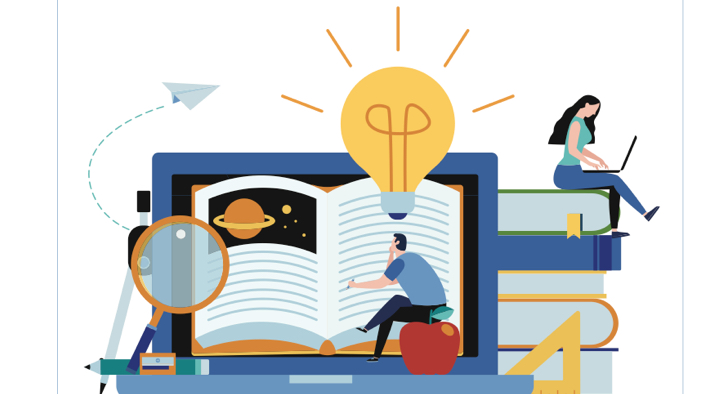
Tailored Learning Experiences
In a student-centered classroom, instruction is personalized to meet the individual needs, interests and abilities of each student. Teachers recognize that every student is unique and they adapt their teaching methods accordingly, allowing students to learn at their own pace.
In a student-centered classroom, the principles of individualization and personalization lie at the heart of the educational experience. It’s a pedagogical approach that acknowledges and celebrates the uniqueness of every student, understanding that each individual possesses a distinct blend of needs, interests and abilities. Within this dynamic learning environment, teachers serve as the compass, guiding their students on personalized educational journeys.
The essence of student-centered learning lies in the adaptability of teaching methods. Teachers don’t rely on one-size-fits-all approaches but instead employ a diverse toolkit of instructional strategies. They keenly observe their students, gathering insights into their strengths, weaknesses and learning preferences. Armed with this information, teachers tailor their lessons to match each student’s pace of learning, ensuring that no one feels left behind or held back.
For some students, this might mean accelerated learning opportunities, allowing them to delve deeper into topics of interest or tackle more advanced material. Others may benefit from additional support, be it through one-on-one tutoring, targeted resources or alternative learning pathways. In this way, students are empowered to progress at their own speed, whether that’s sprinting ahead or taking smaller, deliberate steps, fostering a sense of agency over their education.
Beyond just adapting to individual learning styles, student-centered classrooms also nurture a sense of ownership over learning. Students are encouraged to pursue their passions and curiosities and teachers act as facilitators, helping them set and achieve their goals. This fosters a love for learning that goes beyond the classroom and can last a lifetime.
Student-centered learning goes beyond the classroom as well. It extends into the realm of assessment and evaluation. Traditional standardized tests often give way to more diverse methods of evaluation, including portfolios, projects, presentations and peer assessments. This approach allows students to showcase their strengths and knowledge in ways that resonate with their unique abilities and interests.
Moreover, student-centered classrooms create an environment of collaboration and peer learning. Students often work together on projects, share their insights and learn from one another. This not only enhances their academic growth but also nurtures essential skills such as communication, teamwork and empathy.
In conclusion, a student-centered classroom is a dynamic, adaptable and inclusive space where education is personalized to meet the distinctive needs, interests and abilities of each learner. It celebrates the rich tapestry of individuality within a classroom while fostering a love for lifelong learning. In this environment, students not only acquire knowledge but also develop critical thinking skills, self-confidence and a deep appreciation for their own potential. It’s a transformative approach that empowers students to chart their unique educational journeys, setting them on a path toward success and fulfillment.
Don’t stop here; you can continue your exploration by following this link for more details: Five Essential Strategies to Embrace Culturally Responsive Teaching
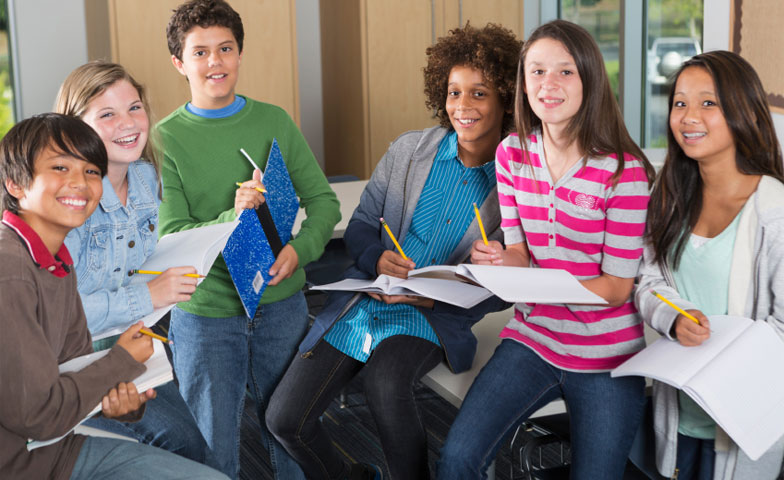
Active Engagement
Students are encouraged to be active participants in the learning process. They ask questions, investigate topics and engage in discussions. This active engagement not only deepens their understanding but also fosters critical thinking and problem-solving skills.
Encouraging students to take an active role in their own learning process is like igniting a spark that illuminates their educational journey. It’s a pedagogical approach that transcends the traditional model of passive absorption of information, empowering students to become architects of their knowledge.
When students are encouraged to ask questions, they embark on a quest for knowledge that fuels curiosity and inquiry. Questions serve as the building blocks of understanding, guiding students to explore concepts and ideas in-depth. They learn that questions are not just a means of seeking answers but a pathway to deeper insights and discoveries.
Investigating topics allows students to become researchers, harnessing their innate sense of curiosity to uncover facts, analyze data and draw conclusions. This hands-on exploration equips them with essential research skills that extend beyond the classroom and into real-world situations. It also instills a sense of autonomy and self-directed learning, valuable attributes for lifelong learners.
Engaging in discussions transforms students into active contributors to the collective pool of knowledge. It’s in these dynamic exchanges that they refine their communication skills, articulate their ideas and learn to respectfully challenge or build upon the perspectives of their peers. Discussions stimulate critical thinking, as students are encouraged to evaluate information, consider different viewpoints and form well-reasoned arguments.
Furthermore, active engagement fosters problem-solving skills, a cornerstone of 21st-century education. Students encounter challenges, both academic and real-world, that require them to think creatively, analyze situations and generate innovative solutions. By actively participating in the learning process, they become adept at approaching problems with confidence and resilience.
Active participation in learning also nurtures a sense of ownership and responsibility. Students take pride in their achievements and feel a genuine connection to the knowledge they acquire. This emotional investment not only enhances their motivation to learn but also reinforces their sense of self-efficacy, the belief that they can effect positive change through their actions.
In conclusion, the encouragement of active participation in the learning process is a fundamental pedagogical principle that empowers students to become curious, independent thinkers, skilled investigators and effective communicators. It cultivates the critical thinking and problem-solving abilities essential for success in both academic pursuits and the challenges of the real world. Ultimately, it shapes students into lifelong learners who are not passive recipients of knowledge but active seekers and creators of it.
For a comprehensive look at this subject, we invite you to read more on this dedicated page: The Comprehensive Guide to Project-Based Learning: Empowering …

Independence and Autonomy
Student-centered learning promotes independence and autonomy. Students are given the freedom to make choices about their learning, including selecting topics for research, setting goals and deciding how to demonstrate their understanding.
Student-centered learning is a transformative educational approach that places students at the helm of their own learning journey. It empowers them with a sense of independence and autonomy that goes beyond the traditional classroom structure. Here’s a deeper exploration of why this approach is so significant:
Ownership of Learning: Student-centered learning invites students to take ownership of their education. They become active participants rather than passive recipients of information. This sense of ownership fuels their intrinsic motivation to learn, as they see themselves as architects of their knowledge.
Personalized Learning: In a student-centered environment, each student’s unique needs, interests and learning styles are considered. This personalization ensures that learning experiences are meaningful and relevant to individual learners, fostering a deeper understanding of the material.
Choice and Agency: Students are given choices in their learning journey. They can select topics for research, set goals and decide how to demonstrate their understanding. This autonomy nurtures decision-making skills, critical thinking and the ability to take initiative.
Intrinsic Motivation: When students have a say in their learning, they are more likely to be intrinsically motivated. They derive satisfaction from the learning process itself, rather than just seeking external rewards or grades. This intrinsic motivation leads to a lifelong love of learning.
Problem-Solving Skills: Student-centered learning encourages students to grapple with real-world problems and challenges. They learn to apply critical thinking and problem-solving skills to address complex issues, preparing them for the complexities of adulthood.
Communication and Collaboration: In a student-centered setting, students often collaborate on projects and share their insights with peers. This collaboration enhances their communication skills, teamwork and ability to consider diverse perspectives.
Preparation for the Future: The skills cultivated in a student-centered environment align with the demands of the modern world. In an age of rapid change, adaptability, creativity and self-direction are essential attributes for success.
Life-Long Learning: Student-centered learning instills a passion for lifelong learning. It equips students with the skills and mindset needed to continue acquiring knowledge and skills independently, long after their formal education is complete.
Autonomy in Decision-Making: Allowing students to make choices about their learning helps them develop autonomy in decision-making, a skill that extends beyond the classroom and into various aspects of life.
Engagement and Retention: Students are more engaged and likely to retain knowledge when they have a say in what and how they learn. This active engagement leads to deeper understanding and lasting retention of information.
Emotional Intelligence: Student-centered learning promotes self-awareness and emotional intelligence. As students make choices and navigate their learning journey, they also learn about their strengths, weaknesses and emotional responses to challenges.
Cultivation of Lifelong Learners: Ultimately, student-centered learning is about cultivating lifelong learners—individuals who are curious, adaptable and confident in their ability to acquire new knowledge and skills throughout their lives.
In summary, student-centered learning is a paradigm shift that empowers students to become active, self-directed and lifelong learners. It nurtures independence, autonomy and a deep love for learning that extends far beyond the classroom, equipping students with the tools they need to thrive in an ever-evolving world.
For additional details, consider exploring the related content available here Inspiring Autonomous Artists: A Framework for Independent Singing
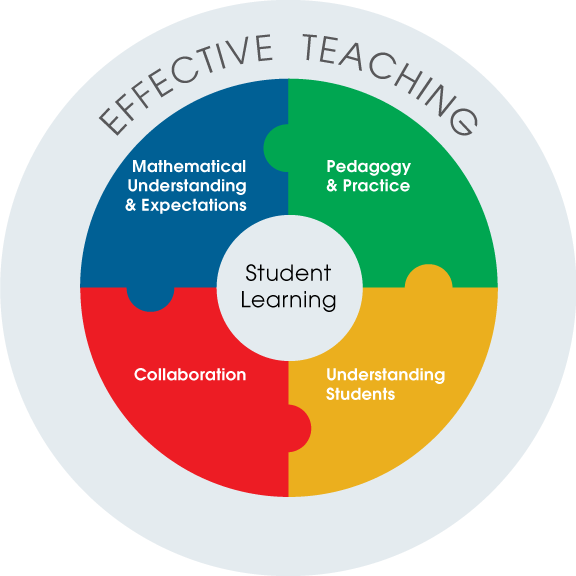
Collaboration and Peer Learning
Collaboration is a cornerstone of student-centered learning. Students work together on projects, share ideas and learn from one another. This collaborative environment mirrors the real-world skills needed for success in various professions.
Collaboration is a cornerstone of student-centered learning. Students work together on projects, share ideas and learn from one another. This collaborative environment mirrors the real-world skills needed for success in various professions and its impact goes far beyond the classroom.
Problem-Solving Skills: Collaboration encourages students to approach complex problems from different angles. They learn to consider multiple perspectives, weigh pros and cons and arrive at creative solutions through consensus. These problem-solving skills are invaluable in virtually every profession.
Effective Communication: Working collaboratively hones students’ communication skills. They learn to express their thoughts clearly, actively listen to others and articulate their ideas in a way that resonates with their peers. These communication skills are vital in building relationships and conveying ideas in the workplace.
Teamwork and Leadership: Collaborative projects allow students to experience both sides of teamwork—being a team player and taking on leadership roles. They learn to leverage each team member’s strengths, delegate tasks and motivate their peers. These experiences prepare students to work effectively in diverse teams and assume leadership responsibilities in their careers.
Time Management: Collaborative projects often come with deadlines. Students must learn to manage their time efficiently to meet these deadlines while juggling their individual responsibilities and contributions to the team. This time management skill translates well into professional settings with tight schedules.
Conflict Resolution: Collaborative environments sometimes bring about conflicts and disagreements. Learning to navigate and resolve conflicts constructively is an essential skill in any profession. It helps maintain a harmonious work environment and fosters positive relationships with colleagues.
Diverse Perspectives: In collaborative settings, students interact with peers from diverse backgrounds, cultures and perspectives. This exposure broadens their horizons and prepares them to work in multicultural and global workplaces, where diversity is celebrated and valued.
Innovation and Creativity: Collaboration often sparks creativity and innovation. Students bounce ideas off each other, push boundaries and inspire novel approaches to problems. These creative thinking skills can drive innovation in industries ranging from technology to the arts.
Adaptability: In rapidly changing industries, adaptability is key. Collaborative learning teaches students to adapt to new challenges, technologies and methodologies. They become comfortable with change, a vital quality in today’s dynamic job market.
Networking Opportunities: Collaborative learning environments naturally foster networking. Students build connections with their peers, creating a professional network that can prove valuable in their future careers. Networking can open doors to job opportunities, partnerships and mentorship.
Empathy and Emotional Intelligence: Working closely with others cultivates empathy and emotional intelligence. Students become more attuned to the feelings and needs of their colleagues, improving their ability to build positive relationships and navigate workplace dynamics.
Real-World Projects: Many student-centered collaborative projects mirror real-world scenarios. This practical experience allows students to apply academic knowledge to authentic situations, preparing them for the challenges they will face in their chosen careers.
Life-Long Learning: Collaboration encourages a mindset of continuous learning and improvement. As students collaborate and exchange ideas, they recognize the value of ongoing education and professional development, instilling a commitment to life-long learning.
In essence, collaborative learning is not just about completing assignments together; it’s about fostering a set of skills and attitudes that are highly transferable to the world beyond the classroom. It equips students with the tools they need to thrive in the workplace, adapt to change and contribute meaningfully to their chosen professions. As they embrace collaboration during their educational journey, students are laying the foundation for a successful and fulfilling career path.
To delve further into this matter, we encourage you to check out the additional resources provided here: Empowering Students: The 5E Model Explained | Lesley University
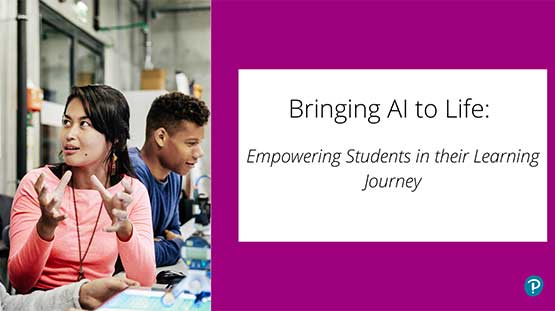
A Shift in the Role of the Teacher
In student-centered learning, the role of the teacher evolves from a lecturer to a facilitator and mentor. Teachers guide, support and inspire students, fostering a sense of ownership over their learning.
In student-centered learning, the transformation of the teacher’s role is at the heart of creating a vibrant and effective educational environment. This evolution, from lecturer to facilitator and mentor, brings forth a myriad of benefits and opportunities for both educators and students alike:
Facilitating Exploration: As facilitators, teachers create an atmosphere where students can explore topics and concepts at their own pace and depth. This exploration sparks curiosity and encourages students to delve deeper into subjects that genuinely interest them.
Nurturing Critical Thinking: Student-centered learning promotes critical thinking. Teachers guide students in analyzing information, questioning assumptions and developing well-informed opinions. This process equips students with valuable problem-solving skills that extend beyond the classroom.
Empowering Self-Directed Learning: By taking on the role of mentors, teachers empower students to become self-directed learners. They teach students how to set goals, manage their time effectively and take responsibility for their own education, skills that are essential for success in higher education and beyond.
Tailoring Instruction: Student-centered learning allows for individualized instruction. Teachers can adapt their guidance to meet the diverse needs and learning styles of each student, ensuring that no one falls behind or feels left out.
Building Confidence: When students take ownership of their learning, they become more confident in their abilities. Teachers who mentor and support this process boost students’ self-esteem, encouraging them to tackle challenges with resilience and determination.
Enhancing Collaboration: Student-centered classrooms often promote collaborative learning. Teachers foster a sense of community where students can share ideas, collaborate on projects and learn from one another. This collaboration mirrors real-world problem-solving and teamwork.
Encouraging Inquisitiveness: In this environment, teachers inspire a thirst for knowledge. They encourage students to ask questions, seek answers and engage in lifelong learning, instilling in them a passion for intellectual growth.
Cultivating Lifelong Learners: The shift to mentorship encourages students to view learning as a lifelong journey rather than a finite process. They understand that education doesn’t end with graduation but continues throughout their lives.
Promoting Inclusivity: Student-centered learning can be particularly inclusive, as it accommodates diverse backgrounds, abilities and learning paces. Teachers ensure that every student has the opportunity to succeed, regardless of their starting point.
Meeting Real-World Demands: The skills and mindset fostered in student-centered learning align with the demands of the modern workforce. Employers value individuals who can think critically, work independently and adapt to change, making student-centered graduates highly employable.
Fostering a Love for Learning: Ultimately, student-centered learning kindles a deep love for learning. It transforms education from a chore into a joyful pursuit, one that students eagerly embrace and carry with them throughout their lives.
In the evolution from lecturer to facilitator and mentor, teachers become the architects of a transformative educational experience. They not only impart knowledge but also empower students to become active participants in their own education, equipped with the skills, mindset and motivation to thrive in a complex and ever-changing world.
To delve further into this matter, we encourage you to check out the additional resources provided here: Student-Centered and Teacher-Centered Classroom management …

Empowering Students through Effective Teaching
Effective teaching is at the core of student-centered learning. Here’s how teachers empower students through their teaching practices:
Effective teaching serves as the beating heart of student-centered learning, setting the stage for an educational journey where students are not passive recipients but active participants in their own growth and development. Teachers play a pivotal role in this process, as they possess the power to inspire, guide and empower students through their teaching practices. Here’s a closer look at how teachers make this transformational impact:
Fostering a Growth Mindset: Effective teachers instill a growth mindset in their students. They emphasize that intelligence and abilities are not fixed but can be developed through effort and perseverance. This belief encourages students to embrace challenges, learn from failures and continuously strive for improvement.
Creating a Safe and Inclusive Environment: A key aspect of student-centered learning is creating an environment where every student feels safe, valued and included. Teachers build trust and rapport with their students, ensuring that everyone’s voice is heard and respected. This sense of belonging nurtures students’ self-esteem and willingness to take risks in their learning.
Tailoring Instruction to Individual Needs: Effective teachers recognize that every student is unique. They differentiate their instruction to accommodate diverse learning styles, abilities and interests. This personalized approach ensures that each student receives the support and challenges they need to thrive.
Encouraging Critical Thinking: Student-centered teaching goes beyond memorization; it cultivates critical thinking skills. Teachers pose thought-provoking questions, encourage students to analyze information and guide them in constructing their own understanding of complex topics.
Promoting Self-Directed Learning: Empowering students means fostering independence. Effective teachers gradually shift the responsibility for learning from themselves to the students. They teach students how to set goals, manage their time and seek resources, allowing them to take ownership of their education.
Providing Constructive Feedback: Constructive feedback is a cornerstone of student growth. Teachers offer specific, actionable feedback that helps students understand their strengths and areas for improvement. This feedback loop guides students in refining their skills and knowledge.
Leveraging Technology and Resources: In today’s digital age, effective teachers harness technology and a wealth of educational resources to enhance learning. They integrate digital tools, online resources and multimedia materials to make lessons engaging and relevant.
Instilling a Love for Lifelong Learning: Beyond academic content, teachers impart the value of lifelong learning. They inspire curiosity and a thirst for knowledge that extends beyond the classroom, helping students become self-motivated learners throughout their lives.
Cultivating Resilience and Adaptability: Teaching involves navigating challenges and setbacks and effective teachers model resilience and adaptability. They show students that setbacks are opportunities for growth and that adaptability is a valuable life skill.
Celebrating Success and Progress: Effective teachers celebrate students’ successes and acknowledge their progress, no matter how small. This positive reinforcement fosters a sense of achievement and motivates students to continue their learning journey.
In essence, effective teaching is the cornerstone of student-centered learning, where students are not just passive recipients but active participants in their education. Teachers who embody these principles empower students to become lifelong learners, critical thinkers and confident individuals ready to navigate the complexities of the world beyond the classroom.
Should you desire more in-depth information, it’s available for your perusal on this page: Empowering Students: The 5E Model Explained | Lesley University

Building a Trusting Environment
Effective teachers create a safe and trusting classroom environment where students feel comfortable expressing their thoughts and ideas. Trust is the foundation upon which student empowerment is built.
The creation of a safe and trusting classroom environment is a cornerstone of effective teaching, for it sets the stage for a transformative educational experience. In such a nurturing setting, students are not only encouraged but also empowered to voice their thoughts, ideas and questions without fear or hesitation. Trust, indeed, is the bedrock upon which the entire edifice of student empowerment is constructed.
The importance of trust in the classroom cannot be overstated. It goes beyond establishing rules and norms; it’s about fostering genuine connections between the teacher and students. Effective teachers understand that trust is a two-way street, requiring not only their trust in their students but also their students’ trust in them.
When students trust their teachers, they are more willing to take risks in their learning. They become active participants, unafraid of making mistakes because they know that their teacher will provide guidance and support. This fearlessness in exploration is at the heart of empowerment, as it enables students to step outside their comfort zones and push the boundaries of their understanding.
Moreover, trust in the classroom cultivates a sense of psychological safety. In this environment, students feel valued, respected and accepted for who they are. They are free to express their thoughts and ideas, knowing that they won’t face ridicule or judgment. This inclusivity empowers students to embrace their individuality and develop a strong sense of self-esteem.
Trust also serves as a catalyst for open communication. When students trust their teacher, they are more likely to seek help when needed, ask questions when they are curious and engage in meaningful discussions. This dialogue not only enriches the learning experience but also fosters a sense of ownership over one’s education.
In such an environment, students begin to see themselves as active agents of their learning journey. They recognize that their thoughts and ideas are not only valued but also integral to the collective growth of the class. This realization ignites a sense of responsibility, encouraging students to take ownership of their learning and strive for excellence.
Furthermore, trust extends beyond the classroom, preparing students for the complexities of the real world. They learn how to navigate diverse perspectives and build positive relationships, essential skills for success in both their personal and professional lives.
In conclusion, effective teachers understand that trust is the cornerstone upon which student empowerment is built. It creates a safe and nurturing classroom environment where students feel valued and empowered to take ownership of their learning. This trust not only enriches the educational experience but also equips students with the skills and confidence needed to navigate the complexities of the ever-changing world beyond the classroom walls.
Don’t stop here; you can continue your exploration by following this link for more details: Culturally Responsive Teaching: Strategies and Tips | American …

Encouraging Curiosity
Teachers stimulate curiosity by asking open-ended questions, posing real-world problems and encouraging students to explore topics that interest them. Curiosity is the spark that ignites the flame of learning.
Indeed, teachers are the architects of curiosity and their ability to ignite the flame of learning is nothing short of remarkable. They wield a toolkit of techniques designed to awaken the innate inquisitiveness within their students, fostering a lifelong love for exploring the world around them.
One of the most potent tools in a teacher’s arsenal is the art of asking open-ended questions. These thought-provoking inquiries are not mere exercises in rote memorization but rather gateways to exploration. By posing questions that lack straightforward answers, educators invite students to think critically, analyze and hypothesize. It’s in the process of grappling with these questions that curiosity is awakened, as students embark on a quest for knowledge, driven by their own desire to uncover the truth.
Real-world problems serve as another cornerstone in the cultivation of curiosity. Teachers present students with complex challenges that mirror the issues faced by society at large. These problems necessitate creative solutions and encourage students to draw upon a myriad of skills and knowledge from different disciplines. In their pursuit of solutions, students become curious investigators, motivated by a genuine desire to make a meaningful impact on the world.
Furthermore, teachers empower students to explore topics that resonate with their passions and interests. By giving students the autonomy to choose their learning paths, educators tap into their intrinsic motivation. When students are allowed to delve into subjects they are truly curious about, they become self-directed learners, embarking on a journey of discovery that extends far beyond the confines of the classroom.
Curiosity is not a fleeting moment but a lifelong companion. It’s the spark that drives individuals to seek answers, to question assumptions and to explore the uncharted territories of knowledge. Teachers, by nurturing this curiosity, lay the foundation for a future where students continue to thirst for learning, innovate and contribute to the betterment of society.
In the hands of teachers, curiosity becomes a beacon, guiding students through the vast sea of information and ideas. It transforms education from a passive endeavor into an exhilarating adventure of exploration and discovery. Ultimately, it is this curiosity that propels society forward, as individuals armed with knowledge and a thirst for more push the boundaries of what is known and inspire others to do the same. In this way, teachers, as cultivators of curiosity, play an indispensable role in shaping not only individual lives but also the trajectory of humanity itself.
If you’d like to dive deeper into this subject, there’s more to discover on this page: Engage Students by Cultivating Their Curiosity – AVID Open Access

Providing Choice and Autonomy
Effective teaching involves giving students choices and opportunities to make decisions about their learning. This sense of autonomy fosters a sense of responsibility and ownership over one’s education.
Effective teaching transcends the traditional role of instructors as knowledge providers; it’s about empowering students to become active participants in their own learning journey. By offering students choices and opportunities to make decisions about what and how they learn, educators lay the foundation for a more profound educational experience.
When students have a say in their learning, it ignites their sense of autonomy. They no longer perceive education as a passive, one-sided process but as an interactive and engaging adventure. This newfound autonomy fosters a sense of responsibility and ownership over their education, making them more invested in their learning outcomes.
Furthermore, giving students choices allows them to tailor their learning experiences to their individual needs, preferences and interests. This personalization not only enhances engagement but also encourages a deeper understanding of the subject matter. Students can explore topics that genuinely captivate their curiosity, making learning a more enjoyable and fulfilling endeavor.
Additionally, when students are actively involved in decision-making, they develop critical life skills. They learn how to evaluate options, set goals, manage their time and assess their progress. These skills are transferable beyond the classroom, preparing students for success in their future careers and personal lives.
Moreover, this approach fosters a collaborative partnership between teachers and students. Instead of a top-down approach, where knowledge flows one way, it becomes a shared journey where both educators and learners collaborate in the pursuit of knowledge. Teachers become facilitators and mentors, guiding students on their paths to discovery.
In essence, effective teaching involves granting students agency in their learning. It’s about recognizing that students are not passive recipients of knowledge but active agents in their education. By nurturing their autonomy, responsibility and ownership, educators empower students to become lifelong learners who are not just educated but self-directed and empowered individuals ready to navigate the complexities of an ever-changing world.
Additionally, you can find further information on this topic by visiting this page: Student-Centered Learning: It Starts With the Teacher | Edutopia

Feedback and Reflection
Teachers provide timely and constructive feedback to help students understand their strengths and areas for improvement. They also encourage students to reflect on their learning experiences and set goals for growth.
Teachers play a pivotal role in nurturing not only students’ academic growth but also their self-awareness and metacognitive skills. Through the art of providing timely and constructive feedback, educators empower students to embark on a journey of self-discovery, guiding them towards a deeper understanding of their strengths and areas for improvement.
Feedback is more than just a commentary on assignments and assessments; it’s a bridge to enhanced learning. When teachers offer feedback that is specific, actionable and delivered in a supportive manner, they create an environment where students can see their work not as a final product but as a stepping stone towards improvement. This approach helps students develop a growth mindset, instilling in them the belief that with effort and perseverance, they can enhance their abilities.
Beyond critiquing students’ work, teachers encourage them to be reflective practitioners. They invite students to ponder their learning experiences, prompting questions like, “What did I do well and why?” and “How can I approach this differently next time?” This self-reflection fosters metacognition, enabling students to become more conscious of their learning processes and strategies. It empowers them to take ownership of their education, setting goals for growth and progress.
Moreover, this feedback and reflection loop extends beyond the classroom and into life’s broader landscape. It equips students with valuable life skills, such as problem-solving, self-regulation and adaptability. These skills are not only crucial for academic success but also for navigating the complexities of the modern world.
In essence, teachers are not just educators of content but also cultivators of self-awareness and lifelong learners. By providing constructive feedback and nurturing reflective practice, they empower students not only to excel academically but also to become resilient, adaptable and self-motivated individuals ready to embrace the challenges and opportunities of the future. In this way, teachers are not only shaping the present but also laying the foundation for the continuous growth and success of their students in the years to come.
Should you desire more in-depth information, it’s available for your perusal on this page: What Is Student Centered Learning and Why Is It Important? – XQ
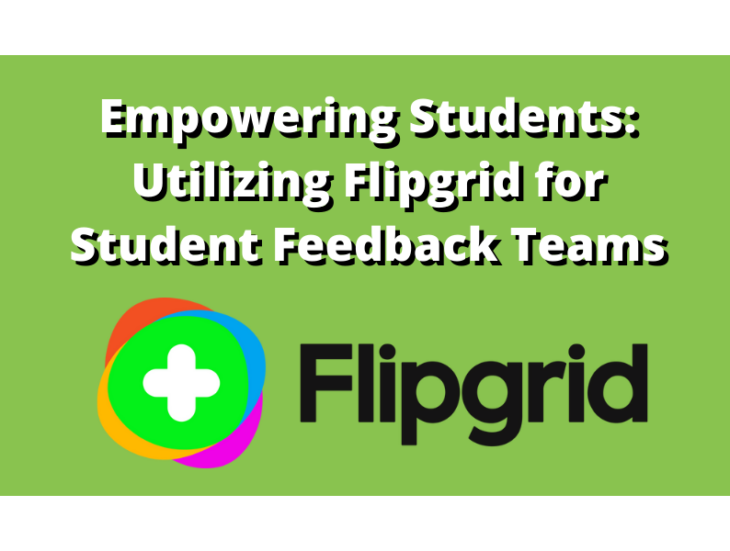
Differentiated Instruction
Effective teachers differentiate instruction to meet the diverse needs of their students. They use a variety of teaching strategies and resources to ensure that all students have access to a meaningful and challenging education.
The art of effective teaching shines brightest when educators skillfully differentiate instruction to cater to the diverse needs of their students. This approach goes beyond one-size-fits-all teaching and embraces the rich tapestry of individual learning styles, abilities and backgrounds. Here’s a more comprehensive exploration of why differentiation is a hallmark of effective teaching:
Personalization: Differentiation personalizes the learning experience. It acknowledges that every student is unique, with distinct strengths, weaknesses, interests and ways of learning. Effective teachers use this understanding to tailor instruction to each student’s individual needs.
Inclusivity: By differentiating instruction, educators create an inclusive learning environment where every student, regardless of their abilities or challenges, can participate and excel. This inclusivity fosters a sense of belonging and equal opportunity for all.
Meeting Diverse Needs: Students enter the classroom with a wide range of academic readiness levels. Effective teachers differentiate to meet these diverse needs, providing support and challenges as necessary to ensure that every student can make progress.
Engagement: Differentiation boosts student engagement. When instruction is aligned with students’ interests, abilities and readiness, they are more motivated to participate actively in the learning process, leading to higher levels of involvement and retention of knowledge.
Higher Achievement: Tailoring instruction to individual needs can lead to higher levels of achievement. Students receive targeted support where they need it and advanced learners are encouraged to reach their full potential, ultimately raising the bar for academic success.
Flexible Grouping: Differentiation often involves flexible grouping strategies. Teachers may group students based on shared needs or interests for specific activities, allowing for collaborative learning and peer support.
Varied Assessments: Effective differentiation includes varied assessments that provide multiple opportunities for students to demonstrate their understanding. This approach recognizes that students have diverse strengths and preferences in how they showcase their learning.
Cultural Sensitivity: Differentiation also extends to cultural sensitivity. Effective teachers acknowledge and respect the cultural backgrounds and experiences of their students, incorporating diverse perspectives into the curriculum to make learning more meaningful and relatable.
Individualized Goals: Through differentiation, teachers work with students to set individualized learning goals. This process empowers students to take ownership of their education and monitor their progress toward these goals.
Positive Learning Experience: Differentiated instruction contributes to a positive learning experience. Students feel supported, valued and challenged, creating a classroom atmosphere that fosters a love for learning and a sense of accomplishment.
Professional Growth: Effective teachers continually refine their differentiation skills. They seek professional development opportunities and collaborate with colleagues to share best practices, ensuring they remain responsive to the evolving needs of their students.
Preparation for the Future: By differentiating instruction, educators equip students with essential skills for the future. These skills include adaptability, critical thinking, problem-solving and the ability to seek out and synthesize information independently.
In essence, differentiation is a pedagogical art that celebrates the uniqueness of each student while ensuring that all have access to a meaningful and challenging education. Effective teachers embrace this approach, recognizing that it not only enhances academic achievement but also fosters a lifelong love for learning and the development of well-rounded individuals ready to navigate the complexities of the world.
Don’t stop here; you can continue your exploration by following this link for more details: Student-Centered Planning | Edutopia

Student-centered learning, facilitated by effective teaching, empowers students to become active, motivated and independent learners. It cultivates a love of learning, critical thinking skills and the ability to navigate the complexities of the modern world. As education continues to evolve, the focus on student-centered learning remains essential in preparing students for a future where adaptability, creativity and lifelong learning are key to success. It’s a journey that empowers students not just with knowledge but with the skills and confidence to shape their own destinies.
Student-centered learning represents a profound shift in the educational paradigm, one that recognizes the intrinsic potential within each student and aims to unlock it through effective teaching. At its core, it’s about transforming students from passive recipients of information into active, engaged participants in their own education.
Empowerment Through Ownership: Student-centered learning places students at the helm of their educational journey. They are encouraged to take ownership of their learning, setting goals, making choices and reflecting on their progress. This sense of ownership fosters a deep commitment to their education.
Motivation as the Driving Force: When students have a say in what and how they learn, their intrinsic motivation soars. They no longer view education as a chore but as a captivating adventure. This motivation propels them through challenges and setbacks, instilling resilience and a love for learning that lasts a lifetime.
Critical Thinking in Action: Student-centered learning is a crucible for critical thinking. It encourages students to question, analyze and evaluate information rather than simply memorizing facts. They learn how to think, not just what to think, equipping them to navigate the information-rich, complex world with discernment and confidence.
Lifelong Learning Mindset: In an era of rapid change, the ability to learn and adapt is paramount. Student-centered learning instills a lifelong learning mindset. Students become agile learners, unafraid of the unknown and adept at seeking knowledge and skills independently.
Collaboration and Communication: Student-centered classrooms often emphasize collaboration and communication. Students work together on projects, exchanging ideas and learning from one another. These skills are essential not only in academic pursuits but also in the modern workforce.
Inclusivity: Student-centered learning embraces diversity. It recognizes that each student brings a unique set of strengths and challenges to the table. As such, it promotes inclusivity, ensuring that every student’s needs are addressed and that no one is left behind.
Preparation for an Uncertain Future: The world is evolving at an unprecedented pace and the jobs and challenges of tomorrow may be vastly different from today. Student-centered learning equips students with the adaptability and creativity they need to thrive in an uncertain future.
Self-Actualization: Ultimately, student-centered learning is a journey of self-discovery and self-actualization. It nurtures not only academic growth but also personal development, helping students realize their full potential and empowering them to shape their own destinies.
As the educational landscape continues to evolve, the focus on student-centered learning remains a guiding star, illuminating the path to a brighter, more empowering future for students. It’s a journey that transcends the confines of the classroom, extending into the fabric of society, where empowered, critical thinkers are poised to tackle the challenges and opportunities of the modern world with confidence, creativity and a love for learning that knows no bounds. In this journey, education becomes a lifelong adventure and students emerge as the architects of their own destinies.
For additional details, consider exploring the related content available here Reimagining the Role of Technology in Education:
More links
Don’t stop here; you can continue your exploration by following this link for more details: Empowering Students: The 5E Model Explained | Lesley University
